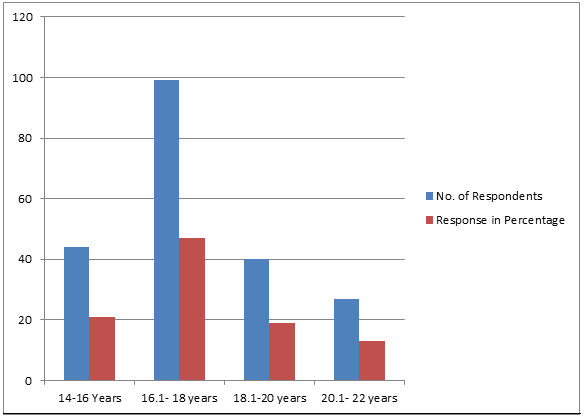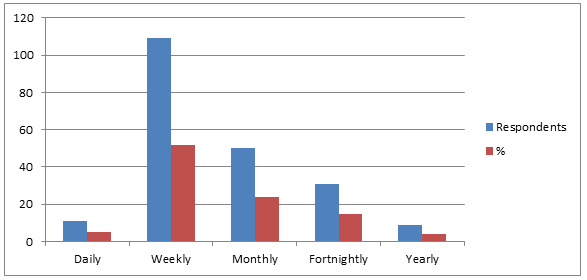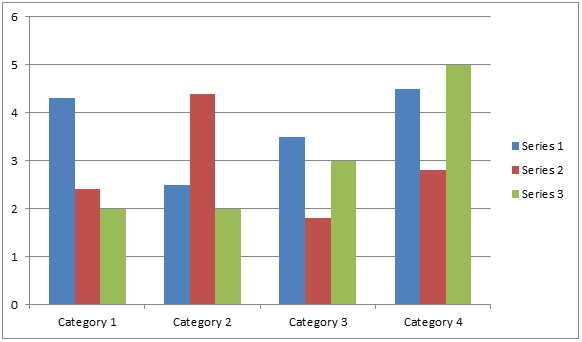Ijraset Journal For Research in Applied Science and Engineering Technology
- Home / Ijraset
- On This Page
- Abstract
- Introduction
- Conclusion
- References
- Copyright
Examining the Factors Influencing Adolescent Shopping Preferences and Motivations: A Case Study from Odisha
Authors: Pradyumna Kumar Dash, Dr. Rasmita Sahoo
DOI Link: https://doi.org/10.22214/ijraset.2024.64003
Certificate: View Certificate
Abstract
Examining the Factors Influencing Adolescent Shopping Preferences and Motivations: A Case Study from Odisha\"
Introduction
I. INTRODUCTION
In the present scenario, existing and upcoming companies’ management needs to think about various policies, strategies, and objectives for marketing and selling their output in a globally competitive market. Today’s innovation is history for tomorrow. There are many challenges in front of manufacturers, wholesalers, and retailers to produce and sell the goods to final consumers. Managements are under stress due to the change in worldwide competition, environment, infrastructural development, technological up-gradation, unskilled labours, and other external problems such as economic, political, technical, and of course social. But wherever there is a will, there is a way. Yes, there are weaknesses, but there are also opportunities. The worldwide market means that companies can find a market for their goods and services anywhere in the world. Infrastructural development will also provide good opportunities for the service sector in Banking, Construction, Transportation, Communication, and Insurance industries. Unskilled labour will provide challenges to Universities and Educational Institutions to provide more effective programs for upgrading human skills. The success of any business depends upon the “Market.” The oldest exchange concept of the market led to an exchange of goods between manufacturers and users. A market consists of the customers’ needing the same type of goods, which a seller wants to sell. A market is a place where buyers and sellers meet each other to exchange their goods. The sellers sell goods and services in the market and return they receive money for the same. The retail sector in India is undergoing a significant transformation, as traditional markets are being overtaken by new formats, including departmental, hypermarket, and supermarket and specialty stores. This shift is being driven by the rapid growth of the population, higher household incomes, increased exposure to foreign cultures, increased consumer aspirations and the availability of a single-stop shopping experience. The mindset of Indian shoppers has been evolving over the past few years, with customers not only visiting the shops to purchase products, but also to enjoy the experience, personalize the shopping experience and create a shopping atmosphere. This has led to the emergence of shopping centres, which offer shopping, entertainment, a good shopping experience and multiple shops all under one roof. Therefore, in addition to selling essential products and services, the purpose of malls is to provide quality time and space for entertaining, socializing, enjoying and having fun. Malls were originally designed as community centres where people would gather to shop, socialize, engage in cultural activities, and engage in peer-to-peer activities. Therefore, it can be safely said that malls have fulfilled the ancient purpose of their creation. In today’s consumer culture, ‘Mall’ is the center of the universe. (Source: Gruen&Smith, 1960, Finberg & Meoli, 1991). Adolescence plays an increasingly significant role in family purchasing decisions in India, where approximately 21% of the population is comprised of adolescents (GoI, 2014). With increasing incomes, a traditional family structure, and a growing children market, the analysis of children's shopping behaviour and how it affects their parents is of paramount importance in family shopping. Adolescents are going to be the future customers for all kinds of products and services. Today, there are many changes taking place in the market.
The main consumers are the teens. Not only are they spending their money, but they are also spending their parents’ money to meet their needs. So, you can say that teens are the future customers for every product and service. As more and more teens enter the market, they will provide a steady stream of new consumers.
II. REVIEW OF LITERATURE
Singh, Gupta, and Kumar (2021) identified eight key elements that shape consumer impressions of shopping centers: availability, alertness, crowding, ambiance, storage, aesthetic appeal, commercial aspects, and terminal subculture. Their study, involving 100 randomly selected teens across various malls in Delhi, revealed significant variation in shopping behavior based on individual preferences.
Ramandeep, Anil, and Rita (2019) studied 160 young individuals to understand their perceptions of shopping malls. They pinpointed eight main factors affecting mall impressions: convenience, variety, awareness, overcrowding, atmosphere, parking, indulgence, and mall culture. The study also highlighted additional amenities that influence preferences, such as seating arrangements, availability of water bottles, electronic maps, ramps, book sections, security features, and customer service. The findings indicated that people typically spent up to 3 hours shopping and preferred weekends over weekdays for their mall visits.
Narahari and Kuvad (2017) focused on customer behavior in Bhavnagar malls, with an emphasis on understanding gender-specific differences in purchasing habits. The study found that shoppers were generally satisfied with their mall experiences, viewing malls as "One-Stop Shops" for diverse needs. Despite this satisfaction, there was a notable lack of awareness about safety measures. The research also indicated that shopping malls serve as social hubs, especially for younger generations who use them for family outings and dining.
Rashmi, Poojary, and Deepak (2016) used structural equation modeling to explore factors affecting customer behavior and loyalty towards shopping malls. Their analysis identified six critical dimensions that impact shopper loyalty and satisfaction. The study concluded that enhancing factors that influence shopping behavior, such as mall environment and service quality, can significantly increase customer loyalty and overall satisfaction.
Ahmed and Mayya (2015) examined consumer perceptions and buying behavior related to organized retail. Their research showed that organized retailing provides numerous benefits, including a broad range of products, competitive prices, and special discounts. The survey found that organized retailing appeals to all income groups, reflecting a preference for malls that offer quality products and competitive pricing.
Amit and Deepika (2015) identified four fundamental elements crucial for attracting customers to malls in India: effective merchandising, variety and selection of products, appealing ambiance, and convenience. Their study underscores the importance of these factors in drawing and retaining shoppers.
Niu et al. (2014) investigated online shopping behaviors among Chinese adolescents aged 16 to 30, using the Integrated Model. The study found that obsessive purchasing tendencies positively moderated unexpected purchases, while awareness of accessibility significantly influenced habitual shopping behaviors. This research highlights the evolving landscape of online shopping among young consumers.
Yaaminidevi (2013) conducted a comprehensive analysis of Facility Management in malls, emphasizing the need for a favorable atmosphere, robust infrastructure, and engaging entertainment options. She suggested that malls should not only meet customers' product needs but also offer recreational and leisure activities to enhance the overall shopping experience.
Adly (2007) identified six key elements that contribute to a mall's attractiveness: comfort, entertainment, variety, essence, convenience, and luxury. The study noted that shoppers preferred shorter visits and favored weekends for their mall trips. Important attributes included safety, cleanliness, seating, parking, product variety, and quality after-sales service.
Diana and Julia (2004) explored the factors affecting girls' perceptions of their mall experiences. They identified five key elements: comfort, safety, retail mix, accessibility, and atmosphere. Their findings provide insight into how these factors influence the overall shopping experience for female consumers.
III. OBJECTIVES
- To investigate the factors driving adolescent purchasing decisions in shopping malls.
- To examine the influence of mall promotional attributes on adolescent buying behavior.
IV. RESEARCH METHODOLOGY
This study is of a descriptive nature. A sample of 210 respondents and mall regular visitors were selected for the purpose of the study.
The primary and secondary components of the study are derived from structured questionnaires and interviews with the adolescents who visit the mall. To ensure the accuracy of the data, data was also collected from a secondary source such as textbook, newspaper, journal, and magazine sources.
V. LIMITATIONS OF THE STUDY
- The study is limited to the consumer behaviour and the purchasing decision of the selected sample respondents from selected malls from Odisha.
- The findings and observations cannot be generalized and may subject to change from time to time and place to place.
- As sample size is 210 it is not necessary that it truly represents the population universe.
Table- 1 Age of the Respondents
|
Particulars |
No. of Respondents |
Response in Percentage |
|
14-16 Years |
44 |
21 |
|
16.1- 18 years |
99 |
47 |
|
18.1-20 years |
40 |
19 |
|
20.1- 22 years |
27 |
13 |
VI. DATA ANALYSIS AND INTERPRETATION

From the above table and diagram it is clear that, 47% of the respondents belong to the age group of below 16.1-18 years, 21% of sample respondents belong to the age group of 14 to 16 years, 19% of the respondents belong to the age group of 18.1 to 20 years and remaining 13% of respondents belong to 20.1 to 22 years. This shows that maximum number adolescent visit to the mall is between age group of 16 to 18 as per the primary data.
Table-2: Frequency of visiting Shopping Mall
|
Particulars |
No. of Respondents |
Response in Percentage |
|
Daily |
11 |
5 |
|
Weekly |
109 |
52 |
|
Monthly |
50 |
24 |
|
Fortnightly |
31 |
15 |
|
Yearly |
9 |
4 |

From the table digram it is clear that, 5% of the sample respondents visit malls daily, 52% of the respondents visit weekly, 24% of the respondents visits Monthly, 15 % of the respondents visits fortnightly and remaining 4% of the respondents visits malls once in a year. It shows that majority of the respondents visit malls weekly.
Table-3: Motive behind visiting Shopping Malls
|
Particulars |
No. of respondents |
Response in percentage |
|
Food |
101 |
48 |
|
Entertainment |
48 |
23 |
|
Ambience |
34 |
16 |
|
Discounts |
8 |
4 |
|
Location |
19 |
9 |

From the above table and diagram it is clear that 48% of the respondents visits shopping mall for the purpose of Food, 23% of the sample respondents visits for the entertainment purpose, 16% of the respondents visits shopping mall to the good ambience, 4% of the respondents visits for discounts and remaining 9% of the respondents preferring good location while visiting to shopping mall.
Table-4: Shopping Mall Promoting Factors
|
Particulars |
No. of respondents |
Response in percentage |
|
Cleanliness |
25 |
12 |
|
Variety of Stores |
67 |
32 |
|
Variety of Events |
42 |
20 |
|
Availability of Parking |
47 |
22 |
|
Safety |
29 |
14 |

From the above table and diagram it is clear that, 12% of the respondents agreed that cleanliness is the promoting factor in mall culture, 32% of the respondents agreed its variety of stores, 20% of the respondents agreed that its variety of events, 22% of the respondents agreed its availability of parking and reaming 14% of the respondents agreed its safety factor. It shows that majority of the respondents gets attract from variety of stores.
VII. FINDINGS
The survey revealed that the majority of respondents were between the ages of 12 and 14. The majority of respondents indicated that they frequented malls on a weekly and monthly basis. Food and entertainment were the primary reasons for visiting malls. The survey revealed that respondents were drawn to a wide variety of stores, believing that they could access a wide range of products and services all in one place. The study shows that the multiple brands and shops attract the respondents towards malls.
Conclusion
Odisha is a melting pot of many cultures and languages. With more and more consumers flocking to malls these days, it has become a vehicle for cultural transformation. According to the respondents to the study, shopping malls have a positive attitude towards them. The convenience of having everything in one place with no weather worries is considered the most attractive factor among young consumers. Malls should improve their decoration, layout, music, and lighting to make the interior and ambiance more attractive. Managers should focus on improving safety to provide a safer environment for their adolescent consumers within malls. Facilities within malls should be improved with quality food courts, clean restrooms, and standard hygiene maintained.
References
[1] B.H, R., Poojary , S., & M.R , D. (2016, July). Factors Influencing Customer behaviour andits impact on Loyalty towards Shopping Malls of Bangalore City. IJEMR, 6(7), 1-14. [2] Bawa Ramandeep, Sinha Anil K. and Kant Rita (2019) “Emerging Mall Culture and Shopping Behavior of Young Consumers “Advances in Anthropology, Vol.9 No.3, 10.4236/aa.2019.93010 [3] El-Adly, M. I.(2007). “Shopping Malls Attractiveness: A Segmentation Approach”. International Journal of Retail and Distribution Management, 35, 936-950. https://doi.org/10.1108/09590550710828245 [4] Jayakumar V. (2016) “Teenagers Perceptions of Retail Format in Shopping Malls: A study on Forum Mall and its Patronage in Bangalore.” , 81-93ISSN 0975-3281 |doi.org/10.12727/ajts.16.581. [5] Khare, Arpita (2011), Mall Shopping Behaviour of Indian Small Town Consumers. Journal of Retailing and Consumer Services, Vol.18 (1). [6] Kumar, Ashvin. (2017). A Study on the Factors Affecting Consumer Behaviour While Shopping at Shopping Mall, International Journal of Scientific & Engineering Research, Vol. 8, Issue. 10, pp. 199-202. [7] Mansi Batra Patney, (2010). Indian consumers and their mall patronage: Application of cultural self and the theory of planned behavior to patronage intentions, Graduate Theses and Dissertations. Paper 11749. Retrieved from http://lib.dr.iastate.edu/etd. [8] Mittal Amit and Jhamb Deepika (2015) “Determinants of Shopping Mall Attractiveness: The Indian Context” [9] Narahari C.Archana & Dhiman Kuvad Dhiman (2017)”Customer Behaviour towardsShopping Malls –A Study in Bhavnagar,” IJARIIE, Vol 3 Issue 2, pp. 211. [10] Niu.H.J.(2014) “Shopping in cyberspace: Adolescent technology acceptance attitude with decision-making styles,” Marketing and Consumer Behavior. [11] Singh Inderpreet, Gupta Kanika and Kumar Sumit (2021) “A Study of Teenagers Buying Behavior in Shopping Malls in Delhi” International Journal of Innovative Research in Engineering & Management (IJIREM) ISSN: 2350-0557, Volume-8, Issue-6, https://doi.org/10.55524/ijirem.2021.8.6.191 [12] Yaaminidevi, S. (2013). A Study on the Consumer Behaviour towards Shopping Mall in Madurai City, International Research Journal of Business and Management – IRJBM, August Vol 1.
Copyright
Copyright © 2024 Pradyumna Kumar Dash, Dr. Rasmita Sahoo. This is an open access article distributed under the Creative Commons Attribution License, which permits unrestricted use, distribution, and reproduction in any medium, provided the original work is properly cited.

Download Paper
Paper Id : IJRASET64003
Publish Date : 2024-08-17
ISSN : 2321-9653
Publisher Name : IJRASET
DOI Link : Click Here
 Submit Paper Online
Submit Paper Online

